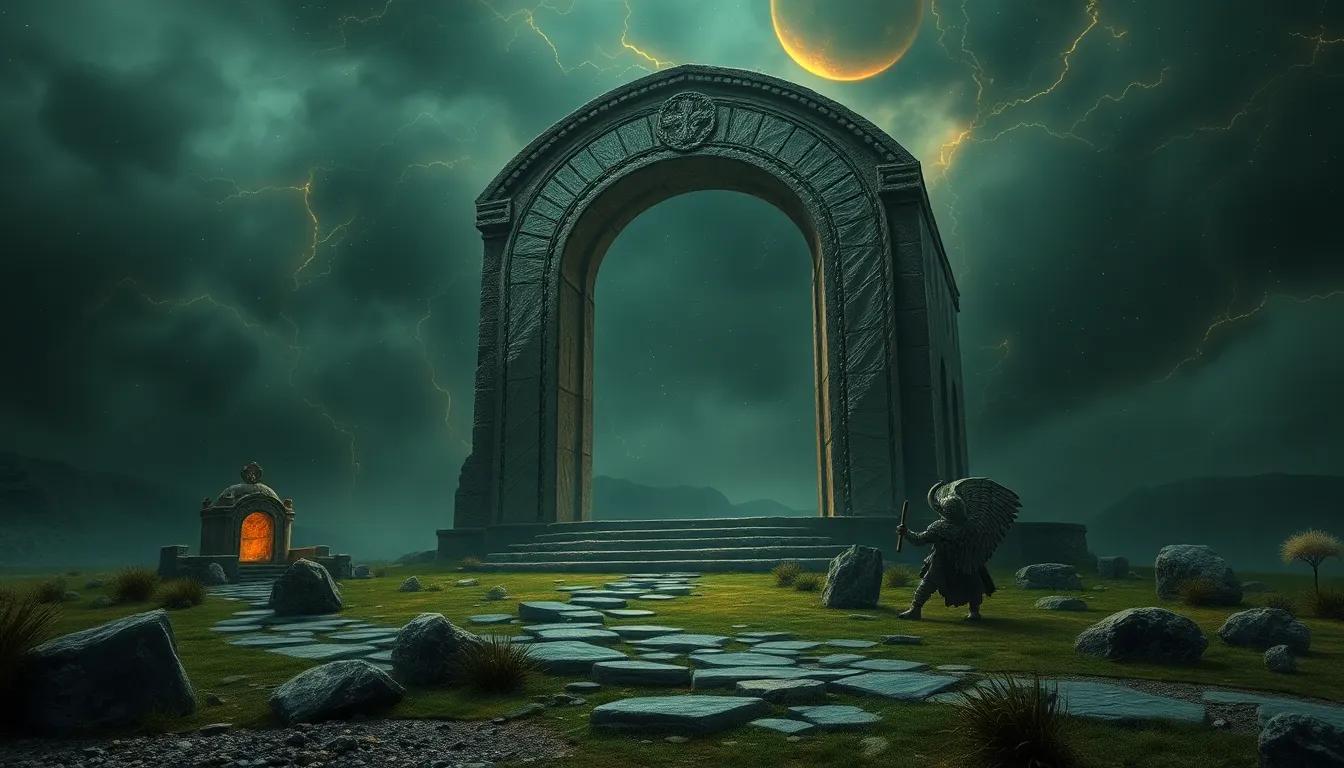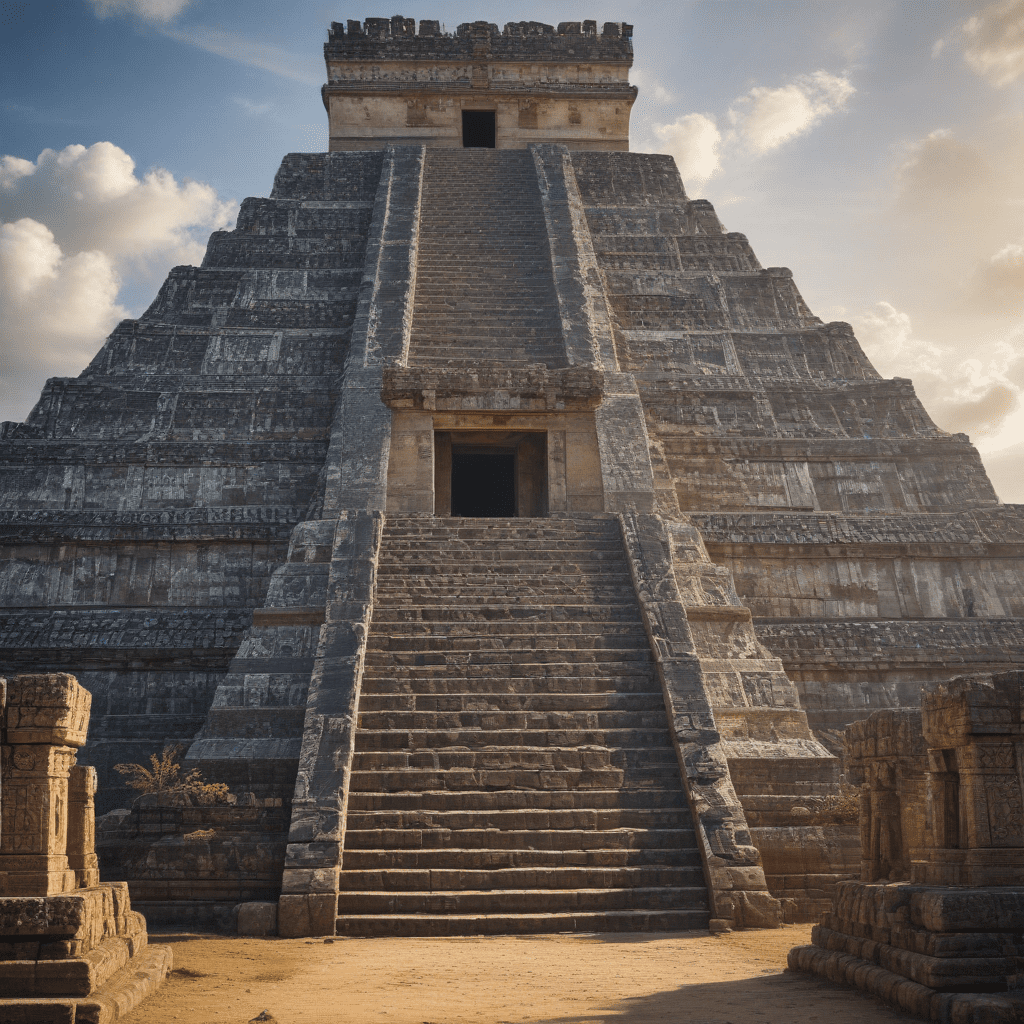Sacred Grounds: The Mythical Places Where Gods Walked Among Us
I. Introduction
Sacred grounds are locations imbued with profound spiritual significance across various cultures and religions. They serve as places where the divine intersects with the earthly realm, often steeped in myth and history. These sites not only hold historical importance but also act as focal points for worship, reflection, and connection to the divine.
The significance of mythical places in religious and spiritual beliefs cannot be overstated. They provide believers with a tangible connection to their faith, offering a space for rituals, pilgrimage, and community gathering. This article will explore the concept of sacredness across different cultures, delve into specific sacred sites, and examine how these grounds impact spiritual practices today.
II. The Concept of Sacredness in Mythology
Sacredness is a multifaceted concept that varies across cultures but fundamentally signifies a space or entity regarded as holy, protected, or worthy of reverence. In mythology, sacred spaces often emerge from stories that highlight their importance:
- Divine Presence: Many cultures believe that gods or spirits inhabit specific places, making them sacred.
- Ritual Significance: Myths often dictate rituals performed at these sites, reinforcing their sacred status.
- Community Identity: Sacred grounds often foster a sense of belonging and identity among followers.
Myths serve as narratives that shape the perception of these sacred spaces, offering explanations and teachings that enhance their significance. They act as a bridge between the divine and the mortal, allowing people to connect with the supernatural.
III. Ancient Greece: The Divine Landscape of Mount Olympus
Mount Olympus, the highest mountain in Greece, is famously known as the home of the Greek gods. According to mythology, it was here that Zeus, Hera, Poseidon, and other deities resided, ruling over the world from their celestial abode.
Several key myths are associated with Mount Olympus, including:
- The Titanomachy: The epic battle between the Titans and the Olympian gods, which established the latter’s supremacy.
- The Birth of Athena: The goddess of wisdom emerged from Zeus’s forehead on this sacred mountain.
- The Twelve Olympians: The principal deities of the Greek pantheon held court on Olympus, influencing human affairs.
The cultural impact of Olympus on ancient Greek society was profound. It served not only as a mythical home for gods but also as a source of inspiration for art, literature, and philosophy, highlighting the interplay between humanity and the divine.
IV. The Sacred City of Mecca: A Center of Faith in Islam
Mecca, located in present-day Saudi Arabia, is the holiest city in Islam. It holds immense historical and spiritual significance, drawing millions of pilgrims each year. The city is home to the Kaaba, a cubic structure that Muslims face during prayers.
The Kaaba is central to Islamic beliefs and is believed to have been built by Abraham and his son Ishmael. Its importance is underscored during the Hajj pilgrimage, one of the Five Pillars of Islam:
- Hajj: Every able Muslim is required to undertake the pilgrimage to Mecca at least once in their lifetime.
- Spiritual Renewal: Pilgrims seek forgiveness, spiritual renewal, and a deeper connection to Allah during the Hajj.
- Unity: The gathering of millions from diverse backgrounds emphasizes the unity of the Muslim community.
Mecca serves as a vital link between believers and the divine, reinforcing faith and community among Muslims worldwide.
V. The Enigmatic Stonehenge: A Celestial Connection
Stonehenge, located in Wiltshire, England, is one of the most famous prehistoric monuments in the world. Its circular arrangement of massive stones has fascinated archaeologists and historians for centuries, leading to various theories regarding its purpose.
Stonehenge is believed to have served as a sacred site, possibly used for:
- Rituals: Evidence suggests it was a site for religious ceremonies, potentially involving ancestor worship.
- Astrological Observations: Alignments of the stones with celestial events indicate its role in ancient astronomical practices.
- Community Gathering: The site may have acted as a focal point for gatherings and celebrations among ancient peoples.
The relationship between Stonehenge and ancient astronomy highlights the significance of celestial events in shaping spiritual beliefs and practices.
VI. The Sacred Sites of the Indigenous Peoples of North America
Sacred sites hold immense spiritual significance for Indigenous peoples of North America. Locations such as Mount Shasta in California and Bear Butte in South Dakota are revered for their cultural and spiritual importance.
These sacred sites are often associated with:
- Creation Stories: Many Indigenous cultures have creation myths tied to these landscapes, linking their identity to the land.
- Ritual Practices: Sacred grounds are often used for ceremonies, healing practices, and spiritual reflection.
- Preservation of Ancestral Knowledge: These sites serve as repositories of cultural history and teachings.
Today, efforts are being made to preserve and respect these sacred grounds, acknowledging their significance within the broader context of Indigenous rights and cultural heritage.
VII. The Hindu Pilgrimage Sites: The Ganges and Beyond
The Ganges River, known as Ganga in Hinduism, is considered one of the holiest rivers in the world. It is revered as a living goddess and serves as a vital pilgrimage site for millions of Hindus.
Other significant pilgrimage sites in India include:
- Varanasi: One of the oldest cities in the world, it is believed that dying here grants liberation (moksha).
- Haridwar: A sacred city where the Ganges leaves the mountains, it is known for the Kumbh Mela festival.
The concept of Tirtha, meaning ‘crossing place’, emphasizes the transition from the material world to the spiritual realm, highlighting the sacredness of these sites in Hindu belief.
VIII. Celtic Sacred Sites: The Legacy of the Druids
Celtic spirituality is deeply connected to nature, and sacred sites such as Newgrange in Ireland and Glastonbury in England hold significant historical and spiritual value.
Key elements of Celtic sacred sites include:
- Nature Worship: The Druids revered natural elements like trees, stones, and water, considering them sacred.
- Solstice Celebrations: Many sites align with solar events, indicating their importance in ancient solar worship.
- Myths and Legends: Celtic myths often feature these sites as locations of transformation and divine encounters.
The legacy of the Druids continues to inspire modern spiritual practices, emphasizing the interconnectedness of nature and the divine.
IX. Modern Interpretations of Sacred Grounds
In contemporary spirituality, the concept of sacred grounds has evolved. Modern interpretations often embrace a more inclusive approach, recognizing the spiritual significance of various locations worldwide.
However, the impact of tourism on sacred sites raises concerns:
- Commercialization: The influx of tourists can lead to the commercialization of sacred spaces, diminishing their spiritual value.
- Preservation Efforts: Many communities work to preserve the integrity of their sacred sites amid growing interest.
- Spiritual Retreats: Some modern spiritual practices involve visiting these sites for introspection and connection with the divine.
As our understanding of spirituality evolves, so too does our relationship with sacred grounds, reminding us of their timeless relevance in a rapidly changing world.




